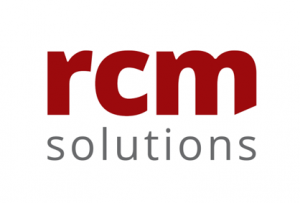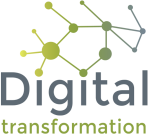
rcm-solutions GmbH has been working for more than 20 years in the area of market research, offering consulting on marketing, strategy and distribution in the business sector.
For what reasons did you decide to introduce a process of digital transformation?
The goal was to change from a company with several sites into a more efficiently working company with an optimal network. So the first objective was the optimisation of existing work procedures and equipment with the aid of digital tools.
Did you face problems during the implementation of the digital transformation? How did you handle these?
At the beginning we were not confronted with any problems. Each step brought an improvement. All of the managing partners immediately realised how necessary this was. […]
Over time, one problem which emerged was that organisational and working procedures became more efficient but using the necessary technology took more time because in the beginning we were using free or cheap products. […]
We responded to this problem in a second step by investing money and implementing Office 365. This gave us cloud and Exchange services from a single source that was maintenance free.
Where do you see the biggest benefits for your company after starting the digital transformation process?
The biggest benefit was the professionalisation of the processes within the company. All three partners have a home-based office at their disposal, as well as an office in Bolzano and one in Terenten. Through the cloud solution, each partner and their employees have the latest version of the files on their system, regardless of where they are working. Beforehand, several files had been edited on the computer and then sent via email, meaning that a lot of different versions were circulating through the company.
Another main benefit is the synchronisation of all devices (mobile and desktop). Now emails, calendars, contacts and data are available at any time and in any place.
Another benefit was the start of the company’s social media marketing. This has since become a separate business branch. […]
Which new technologies and tools are you using and why did you choose these?
Cloud: synchronises all data. We also removed an old server. The cloud allows us to have one central storage together with data backup and data protection.
Exchange: means that emails, calendars and contacts can be retrieved from all devices.
CRM: purchasing a CRM system on the cloud gave us a customer database that had long been necessary.
Social Media: used for marketing and has since become a product of the company
MailChimp: a newsletter-tool, which is currently being used to support marketing
Software for market research surveys: the tool we use is going to be revised continuously in view of automation. This will allow us to easily display evaluation directly from online surveys in a presentation.
What advice do you have for an organisation that is just starting or wants to start a process of digital transformation?
Tackle the project with an open mind, but don’t be naive. It is important that someone within the company takes responsibility for the project follows it through until the end. This person should have the necessary digital skills and be able to foresee the consequences of choices. It is also important to take the project one step at a time rather than all at once.
Furthermore, it is important to opt for tried and tested solutions and not to try to set up something yourself from freeware, open source or other cheap applications . The risk in such a case is losing too many resources when configuring and monitoring these systems.
What risks have you identified that have not yet been solved through the process of digitalisation?
The change happens so fast that it becomes more and more difficult for employees but also for different solutions of digitalisation to be able to keep track of it all. We solved this in our own company by investing more money in producers that we believed were able to keep up with this change and adapt their offer because they themselves were expanding. In this way we could save the internal resources that would have been necessary if we had configured them by ourselves. Anyhow, the responsible person has to stay on the ball to be able to interact with new innovations.

